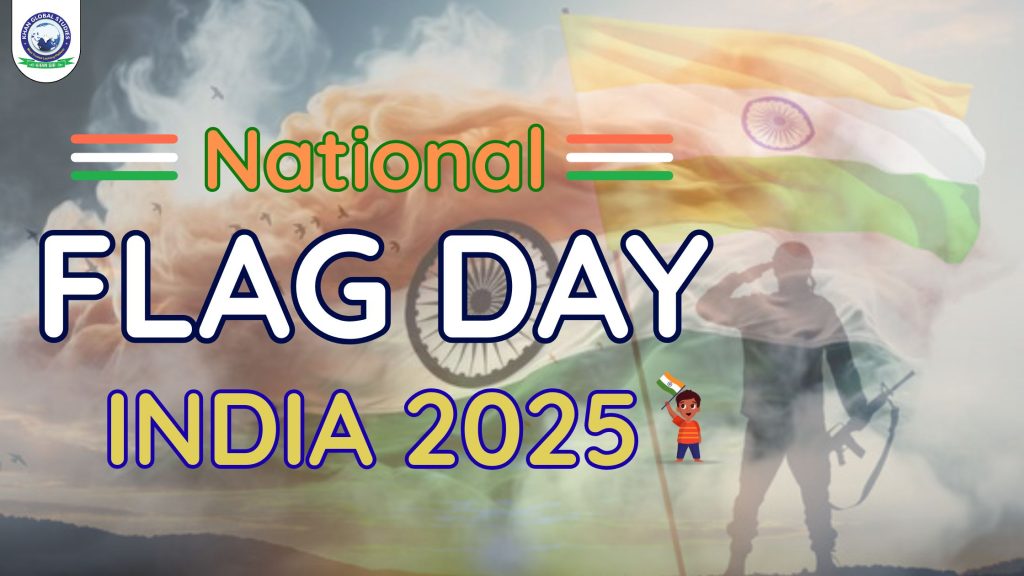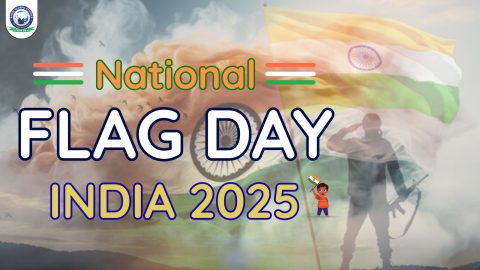Every year, National Flag Day is observed in India to commemorate the significance of the Indian national flag, a powerful symbol of our independence, unity, and sovereignty. This occasion serves as a moment of pride for every Indian, as we remember the struggles of our freedom fighters and the journey that led to the birth of a free and united India under the Tricolor flag.
History of the Indian National Flag
The journey of the Indian national flag is a tale of evolution, courage, and patriotism. The present flag, which we proudly hoist today, is the result of various designs, ideologies, and contributions from great leaders who envisioned a unified nation.
- The first national flag was hoisted on August 7, 1906, in Parsee Bagan Square, Kolkata. It consisted of three horizontal stripes—green, yellow, and red.
- In 1921, Pingali Venkayya, a freedom fighter and flag enthusiast, proposed a flag design that incorporated both Hindu (saffron) and Muslim (green) communities.
- The final design was adopted on July 22, 1947, just before India’s independence. The flag features three horizontal stripes—saffron at the top, white in the middle, and green at the bottom—with the Ashoka Chakra, a navy-blue 24-spoke wheel, at its center.
The Significance of the Tricolor
The Indian national flag, also known as the Tiranga, is not just a piece of cloth. It is a powerful expression of our identity, history, and values.
- Saffron (Top Band): Represents courage, sacrifice, and the spirit of renunciation.
- White (Middle Band): Denotes truth, peace, and purity.
- Green (Bottom Band): Symbolizes faith, fertility, and the land’s prosperity.
- Ashoka Chakra (Center): Stands for righteousness, motion, and justice. It is inspired by the Dharma Chakra of Emperor Ashoka, symbolizing eternal law and progress.
When is National Flag Day Celebrated in India?
National Flag Day is observed annually on July 22, the day on which the Constituent Assembly of India adopted the national flag in 1947. This historic decision set the tone for India’s identity on the global stage.
Importance of National Flag Day
Celebrating National Flag Day is more than a patriotic gesture—it’s a reaffirmation of our shared identity. It serves multiple purposes:
- Educating the Youth: It provides an opportunity to teach the younger generation about the history and values associated with the Indian flag.
- Promoting Unity: The flag is a common symbol that transcends caste, religion, region, and language, bringing all Indians together.
- Honouring the Nation: It is a moment to reflect on our freedom struggle, pay tribute to the heroes who made sacrifices, and commit ourselves to the nation’s progress.
Flag Code of India: Guidelines for Hoisting the National Flag
To preserve the dignity and respect of the national flag, the Flag Code of India was enacted. It lays down the rules and protocols for displaying, hoisting, and handling the flag.
Key Highlights of the Flag Code:
- The national flag must be made of hand-spun and hand-woven khadi.
- It should not be used as a drapery, costume, or for decoration.
- No other flag should be flown above or alongside the Indian flag.
- The flag should be hoisted at sunrise and lowered at sunset.
- In case of national mourning, the flag is flown at half-mast.
In 2022, the Har Ghar Tiranga campaign under Azadi Ka Amrit Mahotsav enabled citizens to hoist flags at home, and the Flag Code was amended to allow flags made from polyester or machine-made fabric to encourage mass participation.
Celebrations and Activities on National Flag Day
Across India, National Flag Day is marked by educational and cultural activities that focus on the patriotic spirit of the nation.
Common Celebrations Include:
- Flag hoisting ceremonies in schools, colleges, government offices, and residential colonies.
- Speeches and skits showcase the freedom struggle and the significance of the flag.
- Drawing and essay competitions among students on topics like “My Flag, My Pride” or “The Journey of the Tricolor.”
- Patriotic songs and marches stir feelings of love for the motherland.
- Exhibitions and documentaries that narrate the evolution of the national flag.
Role of Pingali Venkayya in Designing the Indian Flag
Pingali Venkayya, a name etched in the legacy of India’s national identity, played a crucial role in conceptualising the design of the Indian flag.
- Born in Andhra Pradesh, he was a freedom fighter, linguist, and geologist.
- Inspired by the Swadeshi movement, he emphasized the need for a distinctive Indian flag during the freedom movement.
- After multiple revisions and inputs from national leaders, his concept eventually evolved into the official flag design adopted in 1947.
In recent years, efforts have been made to honor his contribution, including issuing commemorative postage stamps and proposing posthumous awards.
The National Flag as a Symbol of Sovereignty
The Tiranga is not just a ceremonial object—it is a living symbol of our independence, democracy, and pride. It flies high not only at national events but also at international platforms where India asserts its global presence.
Whether it’s during the Olympics, UN meetings, or diplomatic visits, the Indian flag represents a billion dreams and a strong democracy. It reminds us of our roots, responsibilities, and the collective journey of a diverse yet united nation.
Conclusion
As we observe National Flag Day, let us remember that the Indian flag is more than a national emblem—it is a reflection of our freedom, struggle, unity, and pride. By respecting and celebrating the Tiranga, we honour the sacrifices of the past and reaffirm our commitment to building a stronger future for our nation.





